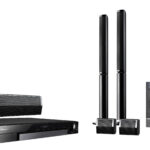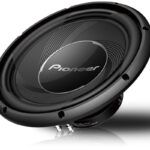Channels on amplifiers refer to the number of separate audio outputs that can be connected to speakers. Amplifiers can have multiple channels, typically ranging from mono (one channel) to stereo (two channels) and even up to surround sound systems with seven or more channels.
These channels allow for separate audio signals to be amplified and sent to different speakers, creating a more immersive and dynamic audio experience. With different channels, amplifiers can reproduce a broader range of frequencies and enhance sound clarity and depth.
This versatility makes amplifiers with multiple channels popular in home theater systems, music studios, and live performances where precise audio distribution is crucial for an optimal listening experience.
The Basics Of Amplifiers And Their Channels
Amplifiers play a vital role in audio systems by enhancing the power of audio signals. Channels on amplifiers determine the number of independent audio signals that can be amplified simultaneously. Each channel on an amplifier is responsible for amplifying a specific audio signal, allowing the listener to experience a richer and more immersive sound.
A higher number of channels on an amplifier often results in better sound quality and a more dynamic audio experience. This is because multiple channels allow for greater separation and distribution of sound across different speakers or audio devices. It enables the listener to enjoy a more detailed and realistic audio reproduction, whether it’s in a home theater setup or a professional sound system.
Understanding the concept of channels on amplifiers is essential for audio enthusiasts and professionals alike, as it plays a significant role in determining the overall audio performance and quality. It empowers individuals to create their desired audio setups, tailor the sound to their preferences, and enjoy a truly immersive audio experience.
Different Types And Configurations Of Amplifier Channels
Channels on amplifiers are a crucial aspect of audio systems, offering various types and configurations to enhance sound quality. Single-channel (mono) amplifiers provide several advantages and applications. They are ideal for powering subwoofers and are popular in car audio systems. Two-channel (stereo) amplifiers, on the other hand, provide depth and separation of sound, creating a more immersive listening experience. These amplifiers are commonly used in home theater setups and music systems. Multi-channel amplifiers optimize audio for complex setups, such as surround sound systems. They are capable of powering multiple speakers, making them suitable for cinemas and large venues.
Benefits And Uses Of Multiple Channels On Amplifiers
Channels on amplifiers play a crucial role in enhancing audio experiences in various settings. Multiple channels offer numerous benefits to users, making them a sought-after feature in home theater systems. One advantage of having multiple channels is the ability to enhance surround sound. By distributing audio signals to different speakers, users can enjoy a more immersive and realistic sound experience, making them feel like they are part of the action.
In addition, amplifiers with multiple channels enable multi-room audio distribution, allowing for seamless audio experiences throughout the entire house. Whether you’re hosting a party or simply moving from one room to another, you can enjoy uninterrupted music or audio content in every space.
Another advantage of multiple channels is the creation of immersive audio environments. Different channels enable the amplification and distribution of specific audio frequencies, resulting in a more spatial and dynamic soundstage. This is particularly beneficial for music enthusiasts, audiophiles, and professionals in the film and music industry who require top-notch audio quality.
Overall, channels on amplifiers offer a range of benefits, from enhancing surround sound to enabling multi-room audio distribution and creating immersive audio environments. They are essential features to consider when choosing an amplifier for an exceptional audio experience.
Factors To Consider When Choosing The Right Channel Configuration
When choosing the right channel configuration for amplifiers, it is important to consider several factors. Firstly, it is crucial to identify the specific audio needs and preferences. This helps in understanding the desired sound quality and the type of audio content that will be played through the amplifiers.
Matching amplifier channels with the speaker configurations is another important aspect. Different speakers require different channel configurations to provide optimal performance. It is essential to ensure that the amplifier has the right number of channels to match the speaker setup.
Additionally, considering scalability for future audio system expansions is advisable. It is wise to choose an amplifier that allows for future upgrades or additions to the audio setup without requiring a complete overhaul of the system.
| Factors to Consider | Action |
|---|---|
| Identify audio needs | Determine sound quality and audio content |
| Match amplifier channels with speakers | Ensure optimal performance |
| Consider scalability for expansions | Allow future upgrades without system overhaul |
Tips For Setting Up And Optimizing Amplifier Channels
Amplifier channels play a crucial role in optimizing sound performance. Calibrating your amplifier channels properly is essential to achieve the optimal audio experience. Utilizing audio processors and equalizers can help fine-tune the sound, enhancing clarity and balance. These tools allow you to adjust frequencies and eliminate any distortions or imbalances that may be present. Another important factor is arranging speakers in a strategic manner and configuring the channels accordingly. By placing speakers appropriately and configuring channels based on your room’s acoustics, you can create a well-balanced audio experience. It is crucial to consider factors such as speaker placement, speaker size, and the type of audio content you’ll be playing. By following these tips, you can ensure you’re getting the most out of your amplifier channels and enjoying optimal sound quality.
Common Misconceptions And Myths About Amplifier Channels
Common misconceptions and myths about amplifier channels often lead to confusion among consumers. One prevalent belief is that more channels always result in better audio quality. However, this is not necessarily true in all cases. While additional channels can provide a more immersive sound experience, the quality of the audio ultimately depends on the components and design of the amplifier.
Understanding the importance of quality components over excessive channels is crucial. It is essential to prioritize amplifiers that use high-quality components for optimal audio performance. Investing in a well-designed amplifier with fewer channels but superior components can deliver better sound quality compared to one with more channels but inferior components.
In conclusion, debunking misconceptions about the number of channels and sound quality is essential. Quality components play a significant role in achieving better audio, and simply adding more channels does not always guarantee superior sound performance.
Conclusion
To summarize, channels on amplifiers are the key to achieving optimal sound in your audio system. By understanding the difference between mono, stereo, and surround sound channels, you can tailor your setup to suit your preferences and needs. Whether you’re a music enthusiast or a movie lover, having the right number of channels can greatly enhance your audio experience.
So, make sure to consider the number of channels when choosing an amplifier for your home entertainment system.
Frequently Asked Questions On What Are Channels On Amplifiers
What Are Channels On Amplifiers And Why Do They Matter?
Channels on amplifiers refer to the number of separate audio signals that the amplifier can process simultaneously. The more channels an amplifier has, the more speakers or audio devices it can connect to. This allows for greater audio flexibility and enhances your listening experience by providing a more immersive sound environment.
How Do Channels Affect The Sound Quality Of Amplifiers?
Channels play a crucial role in determining the sound quality of amplifiers. With more channels, amplifiers can distribute audio signals to different speakers or audio devices, resulting in a well-balanced and immersive soundstage. Each channel delivers specific audio frequencies, ensuring clarity and precision in reproducing different elements of the sound, such as vocals, instruments, and special effects.
What Is The Difference Between Mono, Stereo, And Surround Sound Channels?
Mono channels amplify a single audio signal and are commonly used for center speakers or subwoofers. Stereo channels deliver two separate audio signals and are suitable for traditional two-speaker setups. Surround sound channels, on the other hand, provide multiple audio signals to create a three-dimensional audio experience, perfect for home theater systems.
Each channel configuration offers a unique sound experience tailored to different audio setups and preferences.








